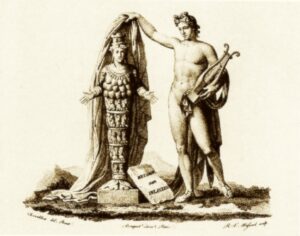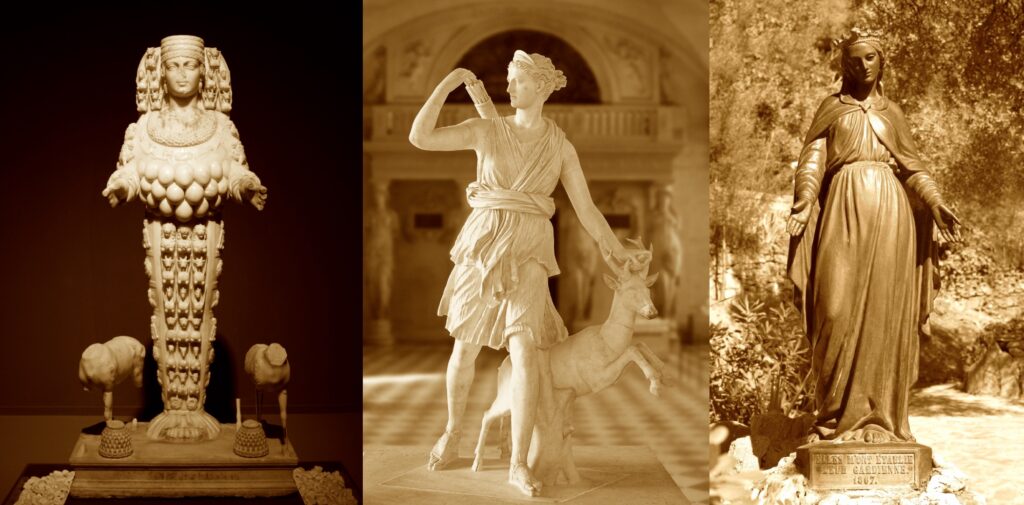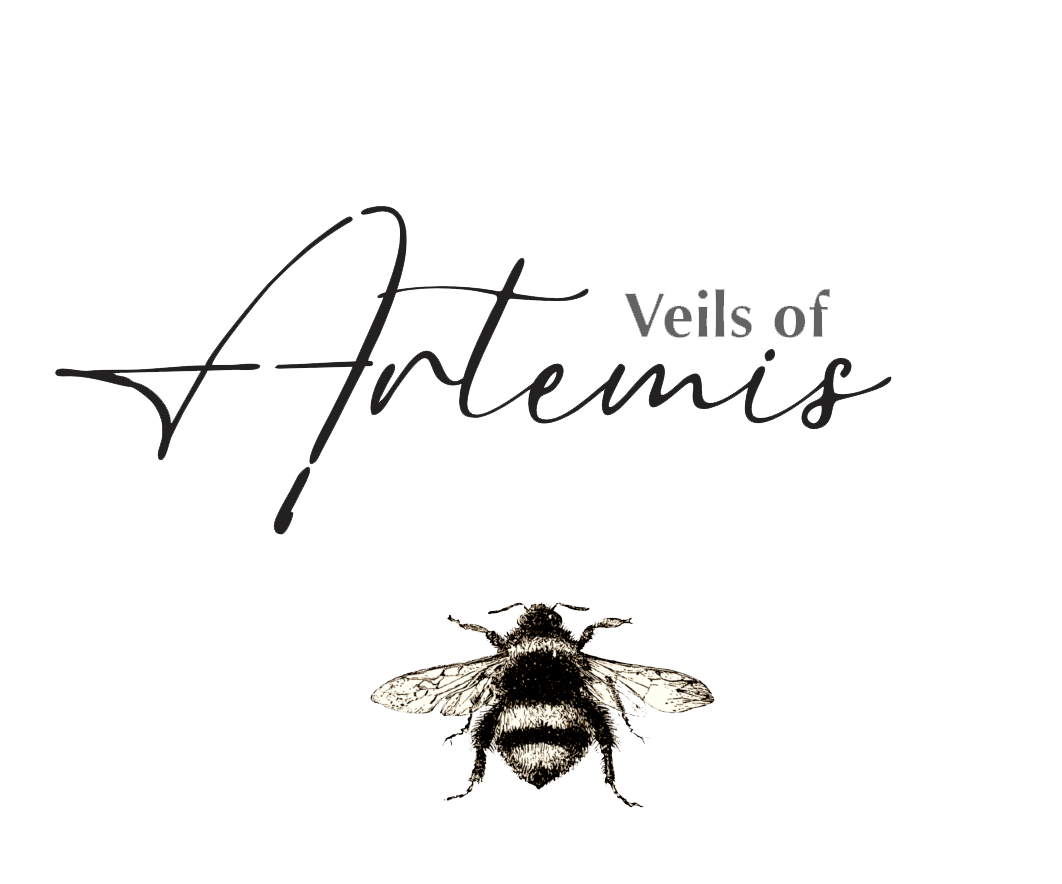
Apollo unveils Artemis. Alexander von Humboldt’s (c. 1807), after a drawing by Bertel Thorvaldsen. The Olymian God, Apollo, unveils the chthonic Goddess, Artemis of Ephesia.
Artemis was a predominate deity worshipped throughout the entire Mediterranean basin into the far reaches of northern Europe. The almighty Goddess arose out of the fertile soils of Anatolia long before the Hellenic Greeks would arrive. She belongs to a mysterious collection of primordial earth Goddesses (including Mater Magna, Kybele, Kubaba and Hecate). These were all-powerful, life-giving and sustaining chthonic (χθόνιος) Goddesses, who were venerated in Asia Minor reaching back millennia. It is believed that these Goddesses were initially worshipped as a tree and, in general, presented in wooden forms.
(Paul addresses the fate of the chthonic Goddess Hera).
Anatolia has proven to be a cultural revolving door, with a constant influx of foreign tribes, nations and empires, often displacing settled communities.
The intrigue, potency and dynamism of the earth Goddesses proved so compelling and awe-inspiring to foreign arrivals that they often adopted the ‘local’ deities as their own. In doing so they would re-fashion a Goddess to suit their needs and sensibilities. The Roman’s took that a step further by melding, and renaming, the Gods according to their belief system. And the Romans made sure to protect Rome by hauling a full array of Goddesses to their city.
One Goddess would stand well above all other Gods and Goddesses. Artemis of Ephesia, well-rooted in ageless chthonic traditions, gracefully emerged from the landscape and psyche of people of Anatolia to nourish, protect and bless her faithful following. She was a deity which served every need of her people. She brought them painlessly in and out of life. She cared for the animal kingdom with kindness and compassion. The waterways, lakes and seas were under her command. The vineyards belong to her, as a gift to us. She cared for the forests and woods, the underworlds. She was the world’s first midwife, and protected the virgins. Her great Temple, one of the seven wonders of the ancient world, was also world bank. At her temple, her home, she offered a safe haven of asylum to persecuted and displaced.
She inspired absolute awe as the Alpha and Omega, and in returned temples and sanctuaries were built in her name. Temple and sanctuaries were built as far-flug as present-day Portugal and Germany.
In her manifestation as Artemis of Ephesia she both proceeds and transcends the Gods of Mount of Olympus as an all-mighty and all-encompassing deity.
Confusion arose with the advent of the Odyssee and Iliad of Homer, c. 800BC, as she was casts in an array of veils which resulted in many durable versions of the Goddess, with attributes often contradicting her primal form. The protector the animal kingdom was now the huntress and often vengeful. The Hellenic Greeks celebrated both distinct forms, and the Romans tended to embrace the later. These two distinct strains of the Goddess took on parallel lives.
As much as Emperor Theodosius I tried to censor Artemis from the culture in 389 and 391 with merciless edicts outlawing polytheism, destroying the temples and stactuaries, he was unable to pry the Goddess from the hearts of her followers.
Artemis only began to lose importance in 431AD at the Council of Ephesus, where the Mother Mary was rendered Theotokos (Θεοτόκος, ‘Mother of God’), the partly deifying Mary and rendering Jesus a God-like. Mother Mary was essentially the last incarnation of Artemis.
Mother Mary arrived in Ephesus, with the Apostle John, after the crucifixion and spent her days in the hill over-looking the city.
400 years after the crucifixion, an age of relative matriarchy drew to a close, and patriarchy was ushered in with the help of pseudo monotheism.
Perhaps it is her great providence to serve all our needs in her many forms.

Artemis in transition: From the Beautiful Artemis, to the Huntress, and into Mother Mary.
As a testimony to how Artemis adapted to her many communities, here is a remarkable list of some of the epitaphs, veils, of the Goddess:
Artemis has at least 291 known epithets, her vasts veils…


